How to Fix Microwave Tripping Circuit Breaker (5 Easy Steps)

If your microwave trips every time you turn it on, there’s probably a problem with the circuit breaker. Here’s how to fix it.
Microwave oven-connected circuit breakers may trip because of their high usage. If the tripping develops into a constant event, it is probably overloading the electrical system. In this case, you immediately need to fix the microwave oven.
How to fix your microwave tripping the circuit breaker:
- Check the Circuit Breaker
- Test Your Microwave
- Check the Door Safety Latch
- Examine the Turntable Motor
- Take a Look at the Capacitor
I’ll go into more detail below.
Why Can a Microwave Trip a Circuit Breaker?
A circuit can handle a specific and limited amount of amps.
In some cases, the microwave might exceed the specific number of amperes the electrical circuit can handle. When that happens, the electrical system might suffer damage. In general terms, the circuit breaker trips by cutting the flow of electricity to prevent the hazard.
For that to happen, there are two potential causes.
The first relates to the electrical sockets. Suppose you plug multiple items into a single outlet. The device will draw much more current than the circuit can tolerate in that case. Thus, it causes an overload, and the breaker trips.
The second is linked to the microwave oven’s state. If its internal mechanism is defective, it may draw too much electricity.
How Can You Fix a Microwave That Keeps Tripping the Circuit Breaker?
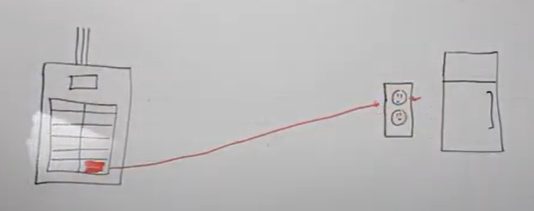
To fix the circuit breaker tripping issue, one must first determine its cause.
The primary step is to check if the device has a dedicated circuit. The dedicated circuit is linked to only one appliance. The arrangement might overload the system and trip the breaker if you connect multiple appliances on such a circuit.
The dedicated circuit will often be labeled “Microwave” in your breaker box.
Check the Circuit Breaker
The circuit breaker will tell you if the problem lies in the electrical system or the microwave oven.
If the electrical supply for the microwave is not a dedicated circuit, it would be wise to call an electrician to change it. A dedicated circuit will allow for the correct voltage to power the device.
To check if the microwave has a dedicated circuit, you can do the following:
- Look at the circuit breaker panel or fuse box. If the device has a dedicated circuit, it should have its own breaker or fuse, which may be labeled (microwave). You can find out if it’s not labeled by trial and error by turning off your breakers and seeing when your microwave clock goes out, or you hear a beep from it powering on.
- Check the device’s owner’s manual or technical specifications. Many appliances and electronic devices have information about the required power and circuit requirements in the manual or online. Look for information about whether the device needs a dedicated circuit.
If the circuit breaker is dedicated, it is probably not the issue, and you need to investigate further.
Test Your Microwave Defectiveness
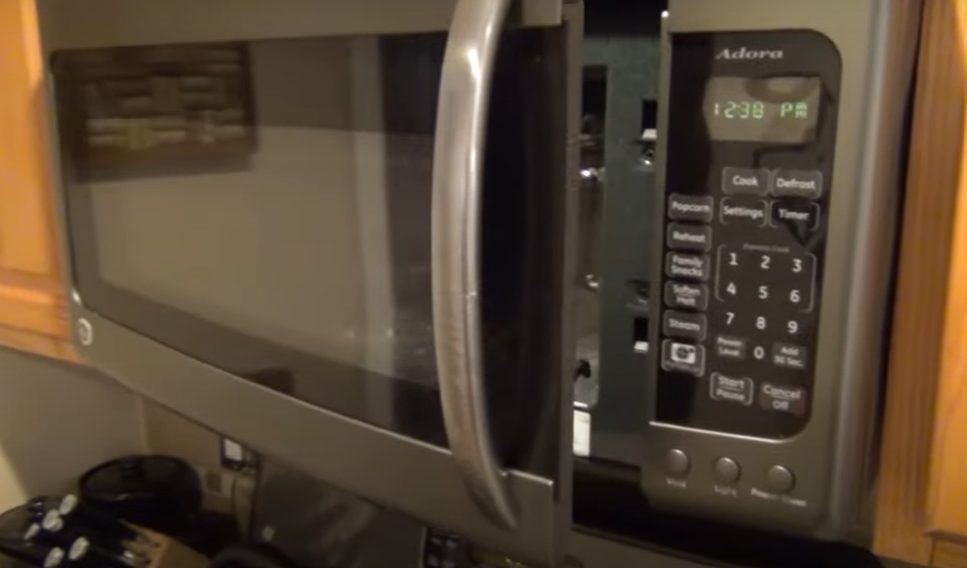
To perform the test, you must find an additional dedicated system in your house (i.e., the washing machine’s outlet).
- Plug the microwave into the outlet (it has to be a high amp circuit).
- Power on the device and use it.
If the breaker doesn’t trip, the outlet where you normally plug the microwave is at fault. In this case, you must call a technician to inspect the outlet.
If the microwave trips the alternative breaker, it is defective, and you need to continue with the testing.
Check the Door Safety Latch
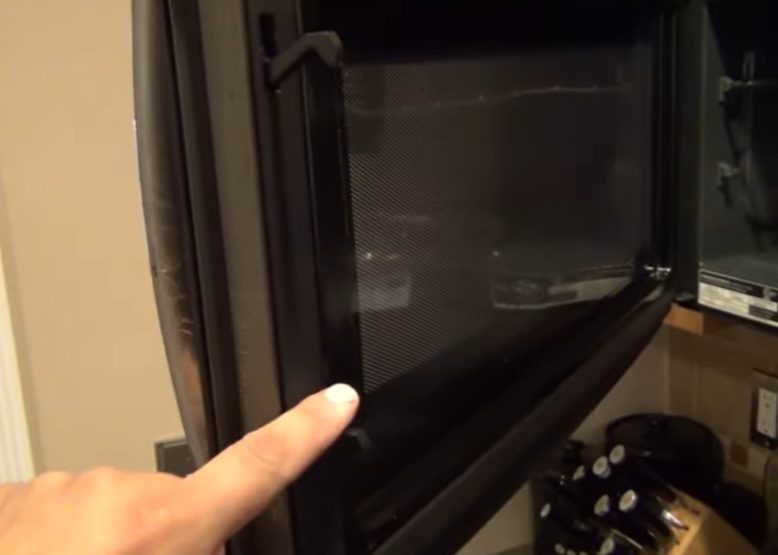
The microwave oven’s door safety latch has numerous switches to ensure safety.
If one of the switches deteriorates, the device might lead to the circuit breaker tripping.
- The first point to check is the hooks. If the latch hooks are destroyed or broken, you must replace the latch unit or the hooks.
- The second examination requires the microwave to be disconnected from the power. Locate the micro-switches on the door latch and test their continuity with a multimeter.
- You must repeat the process when the door is closed and open.
If the switches present discontinuity, they need to be replaced. You can continue with the next step if they do not present any issues.
Examine the Turntable Motor
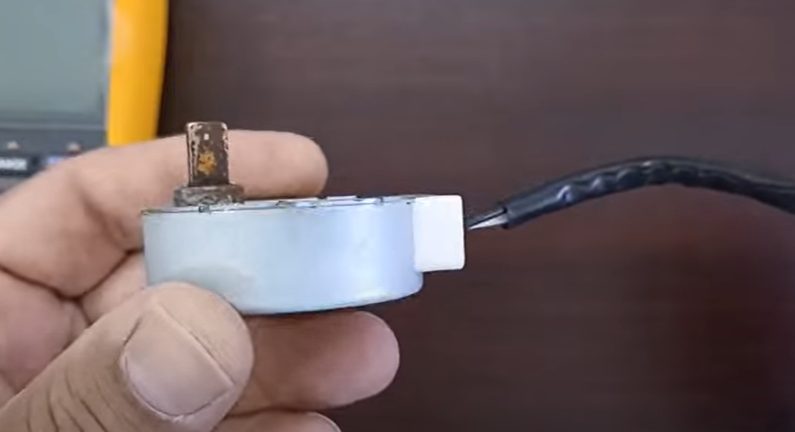
Each microwave oven includes a motor that makes the turntable spin.
The motor can be destroyed if liquid spills, damaging the motor system. That creates issues with the whole electrical system, as it draws excessive power and the breaker trips.
You can avoid this by always cleaning up the inside of the microwave oven when something spills.
To inspect the motor, you need to follow the steps below:
- Remove the microwave from the electrical socket.
- Discharge the capacitor, preferably with the help of a technician.
- Disconnect the turntable motor from the connectors.
- Using a multimeter, check the motor’s continuity.
- If it is faulty, you must replace it.
- If you replace the motor, you must power and test the microwave.
You may check the video below;
If it keeps tripping the breaker, you need to inspect the capacitor.
Take a Look at the Capacitor
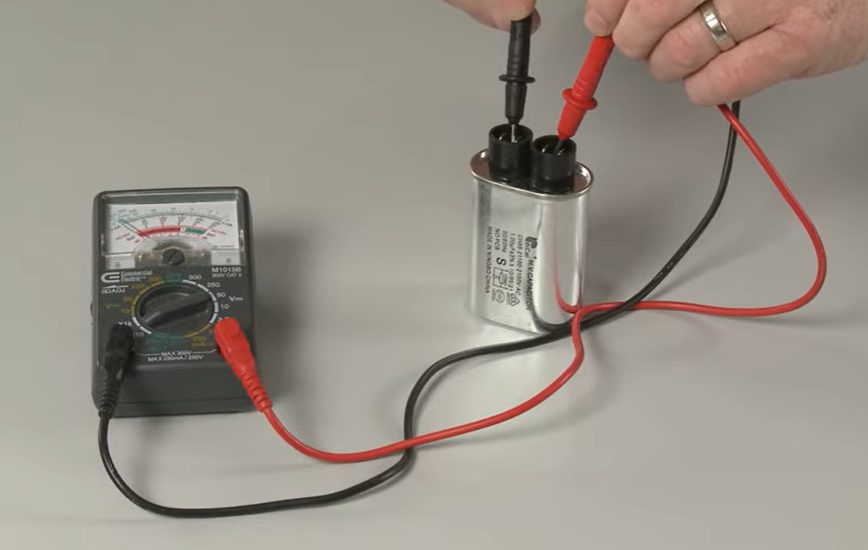
The capacitor’s function is to store energy and ensure the correct operation of the microwave oven.
- To inspect it, power off the microwave oven.
- Cut the electricity flow in the capacitor and remove the connections.
- Use a multimeter to test its performance.
If the capacitor is faulty, you must replace it and test if the breaker trips.
Note that the inspection process of the capacitor can be extremely dangerous. It is best to attempt it with the help of an expert.
References
Video References:
Spotlight Energy Solutions
Fix It With Zim
TARIQ LAB
RepairClinic.com
